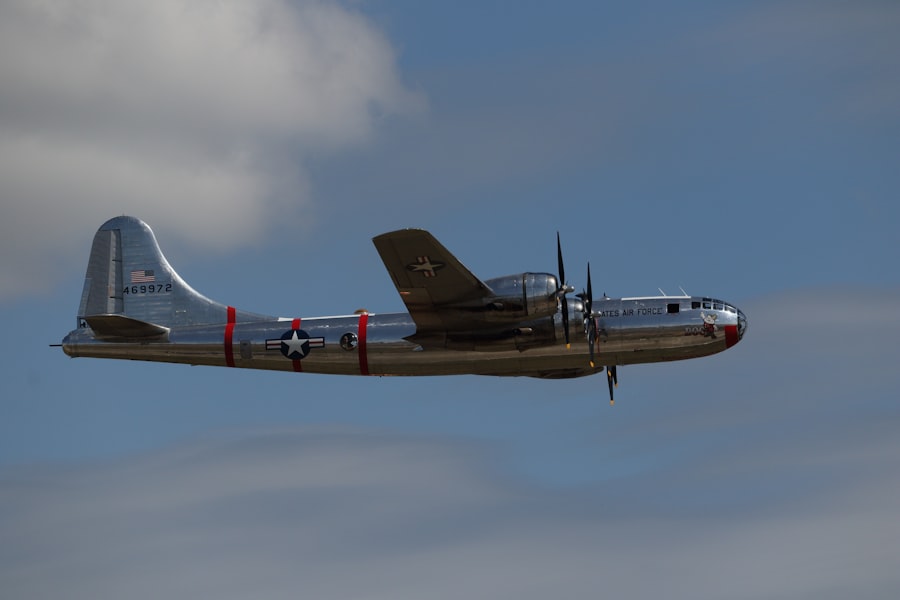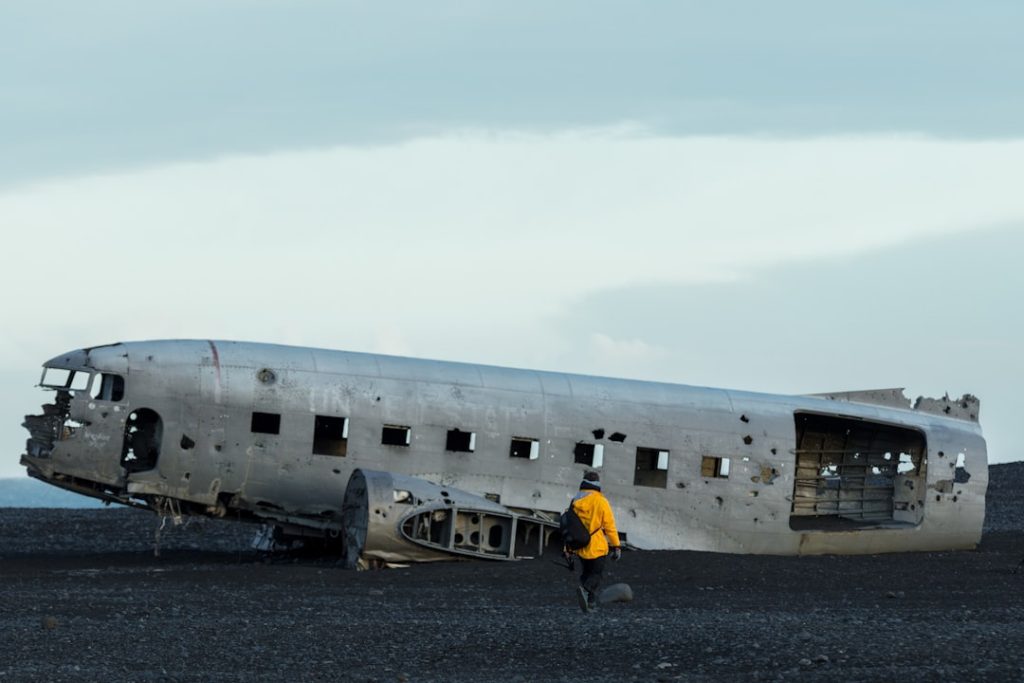The Lockheed U-2, often referred to as the “Dragon Lady,” emerged during a pivotal time in American history, specifically in the context of the Cold War. Developed in the 1950s under the leadership of Clarence “Kelly” Johnson, the U-2 was conceived as a high-altitude reconnaissance aircraft capable of gathering intelligence on Soviet military capabilities. The aircraft’s first flight took place on August 4, 1955, and it quickly became a cornerstone of U.S.
aerial surveillance efforts. The U-2’s development was driven by the urgent need for accurate intelligence during a period marked by escalating tensions between the United States and the Soviet Union. The U-2’s operational debut came at a time when traditional reconnaissance methods, such as manned bombers and satellites, were either too risky or not yet feasible.
The aircraft’s design allowed it to fly at altitudes exceeding 70,000 feet, well above the range of most enemy surface-to-air missiles and interceptors. This capability provided the U.S. with a significant advantage in intelligence-gathering operations.
The U-2’s first major mission occurred in 1956 when it flew over the Soviet Union, capturing high-resolution images that revealed critical information about Soviet missile sites and military installations. This mission set the stage for the U-2’s role as a vital tool in Cold War espionage.
Key Takeaways
- The Lockheed U-2 Spy Plane was developed in the 1950s for high-altitude reconnaissance missions during the Cold War.
- The U-2 Spy Plane is known for its unique design, including its long wingspan and ability to fly at extremely high altitudes.
- The U-2 Spy Plane played a crucial role in gathering intelligence on Soviet military capabilities and activities during the Cold War.
- The U-2 Spy Plane’s notable missions include providing evidence of Soviet missile capabilities and monitoring the Cuban Missile Crisis.
- The U-2 Spy Plane’s impact on modern surveillance technology includes influencing the development of satellite reconnaissance and high-altitude drones.
The Design and Features of the U-2 Spy Plane
The design of the U-2 is a remarkable blend of engineering ingenuity and aerodynamics, tailored specifically for high-altitude reconnaissance. Its long wingspan, measuring approximately 105 feet, is one of its most distinctive features, allowing for exceptional lift and efficiency at high altitudes. The aircraft’s slender fuselage and lightweight construction enable it to glide through the stratosphere with minimal drag, making it an ideal platform for surveillance missions.
The U-2’s unique design also includes a high-aspect-ratio wing configuration, which contributes to its ability to maintain altitude while carrying sophisticated reconnaissance equipment. Equipped with advanced cameras and sensors, the U-2 can capture detailed imagery and gather electronic intelligence from vast distances. The aircraft’s payload includes high-resolution optical cameras, infrared sensors, and radar systems that can detect ground movements and analyze terrain features.
These capabilities allow analysts to monitor military activities, assess potential threats, and gather data on enemy capabilities. The U-2’s ability to operate at such high altitudes also means that it can evade many conventional air defenses, making it a formidable asset in intelligence-gathering operations.
The Role of the U-2 Spy Plane in Cold War Intelligence

During the Cold War, the U-2 played a crucial role in shaping U.S. foreign policy and military strategy. Its ability to provide real-time intelligence on Soviet activities was invaluable in a time when misinformation and propaganda were rampant.
The U-2’s reconnaissance missions helped to verify compliance with arms control agreements and assess the military capabilities of adversaries. For instance, the intelligence gathered by U-2 flights contributed significantly to understanding the Soviet Union’s nuclear capabilities, which informed U.S. strategic decisions regarding deterrence and defense.
The U-2’s contributions were not limited to just military intelligence; it also provided insights into political developments in various regions around the world. By monitoring troop movements, missile installations, and other key indicators, the U-2 helped policymakers make informed decisions about international relations and military engagements. The aircraft’s ability to capture detailed imagery allowed analysts to identify potential hotspots for conflict and assess the stability of various regimes, thereby influencing diplomatic strategies during this tumultuous period.
The U-2 Spy Plane’s Notable Missions and Achievements
| Mission | Achievement |
|---|---|
| Operation Overflight | Provided crucial intelligence on Soviet military capabilities |
| Cuban Missile Crisis | Discovered Soviet missile sites in Cuba, leading to their removal |
| Operation Dragon Lady | Conducted reconnaissance missions over North Vietnam during the Vietnam War |
| Operation Iraqi Freedom | Provided real-time intelligence during the 2003 invasion of Iraq |
Throughout its operational history, the U-2 has been involved in numerous notable missions that have had significant implications for global security. One of the most famous missions occurred in 1960 when pilot Francis Gary Powers was shot down over Soviet airspace while conducting a reconnaissance flight. This incident not only highlighted the risks associated with high-altitude espionage but also led to a major diplomatic crisis between the United States and the Soviet Union.
Powers’ capture and subsequent trial became a focal point in Cold War tensions, illustrating the high stakes involved in aerial surveillance. Another significant mission took place during the Cuban Missile Crisis in October 1962. U-2 flights over Cuba provided critical intelligence that confirmed the presence of Soviet nuclear missiles on the island.
This information was instrumental in shaping President John F. Kennedy’s response to the crisis, ultimately leading to a naval blockade and negotiations that de-escalated tensions between the two superpowers. The U-2’s ability to deliver timely and accurate intelligence during this critical moment underscored its importance as a tool for national security.
The Impact of the U-2 Spy Plane on Modern Surveillance Technology
The legacy of the U-2 extends beyond its immediate contributions to Cold War intelligence; it has also had a profound impact on modern surveillance technology. The advancements made during the development of the U-2 laid the groundwork for subsequent reconnaissance aircraft and satellite systems. For instance, many of the sensors and imaging technologies developed for the U-2 were later adapted for use in unmanned aerial vehicles (UAVs) and modern satellite systems, enhancing their capabilities for intelligence gathering.
Moreover, the operational principles established by the U-2 continue to influence contemporary surveillance strategies. The emphasis on high-altitude flight combined with advanced sensor technology has become a standard approach in modern reconnaissance missions. The lessons learned from U-2 operations have informed the design and deployment of newer platforms such as the Global Hawk UAV, which operates at similar altitudes but with enhanced automation and data processing capabilities.
The U-2 Spy Plane’s Continued Relevance in the 21st Century

Despite being introduced over six decades ago, the U-2 remains an active component of the United States’ intelligence-gathering apparatus in the 21st century. Its unique capabilities continue to fill gaps that other platforms cannot address effectively. While satellite technology has advanced significantly, there are still scenarios where real-time data collection from a manned aircraft is essential.
The U-2’s ability to loiter over specific areas for extended periods allows it to gather intelligence that satellites may miss due to their fixed orbits. In recent years, the U-2 has been deployed in various global hotspots, including conflicts in Syria and Iraq, where it has provided critical support for military operations against terrorist organizations. Its sensors have been instrumental in monitoring troop movements, assessing battlefield conditions, and providing situational awareness to commanders on the ground.
The aircraft’s continued relevance is a testament to its adaptability and effectiveness in an ever-evolving landscape of global threats.
The Controversies and Challenges Faced by the U-2 Spy Plane Program
The U-2 program has not been without its controversies and challenges throughout its history. One of the most significant issues has been its vulnerability to enemy defenses despite its high-altitude capabilities. The incident involving Francis Gary Powers highlighted not only operational risks but also raised questions about the ethics of espionage and international law regarding airspace violations.
Such incidents have led to debates about transparency and accountability in intelligence operations. Additionally, as technology has advanced, so too have concerns regarding privacy and civil liberties associated with surveillance activities. The use of high-altitude reconnaissance aircraft like the U-2 raises ethical questions about monitoring foreign nations versus respecting their sovereignty.
These challenges have prompted discussions within government circles about balancing national security interests with adherence to international norms and human rights considerations.
The Legacy of the U-2 Spy Plane and Its Influence on Aviation History
The legacy of the Lockheed U-2 is multifaceted, encompassing its contributions to intelligence gathering, technological advancements, and its role in shaping aviation history. As one of the first aircraft designed specifically for high-altitude reconnaissance, it set a precedent for future developments in both manned and unmanned aerial vehicles. Its design principles continue to influence modern aircraft engineering, particularly in terms of aerodynamics and sensor integration.
Moreover, the U-2 has become an iconic symbol of Cold War espionage and technological prowess. Its storied history is interwoven with significant geopolitical events that have shaped international relations over decades. As nations continue to grapple with issues of security, surveillance, and diplomacy, the lessons learned from the U-2 program remain relevant today, serving as a reminder of both the potential benefits and ethical dilemmas inherent in aerial reconnaissance operations.


